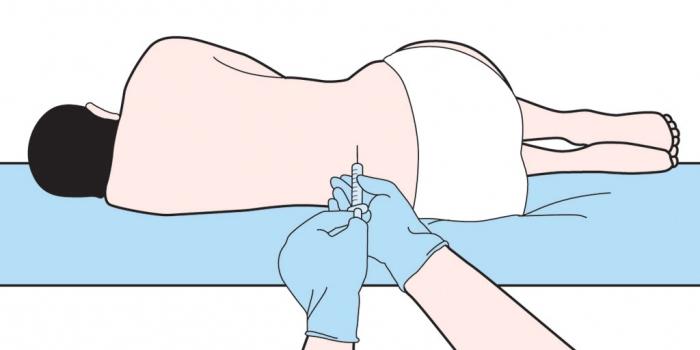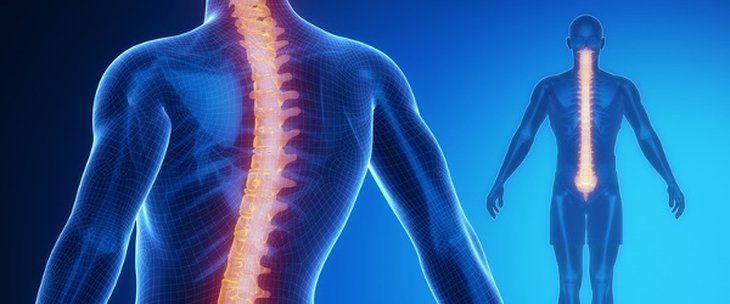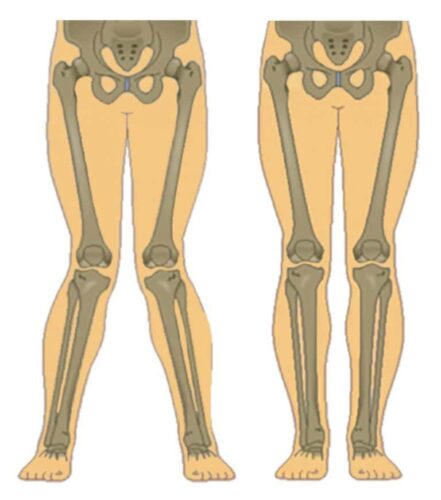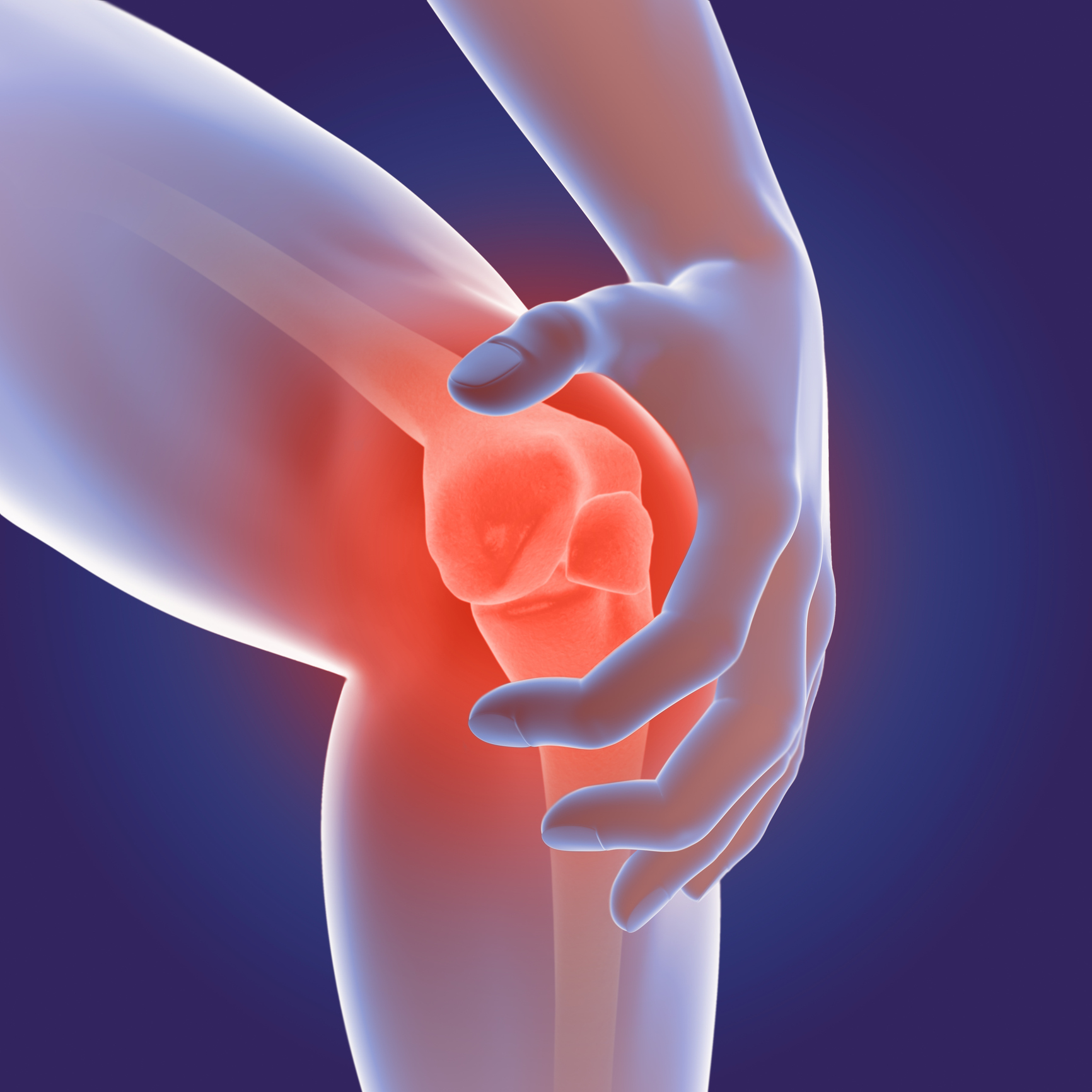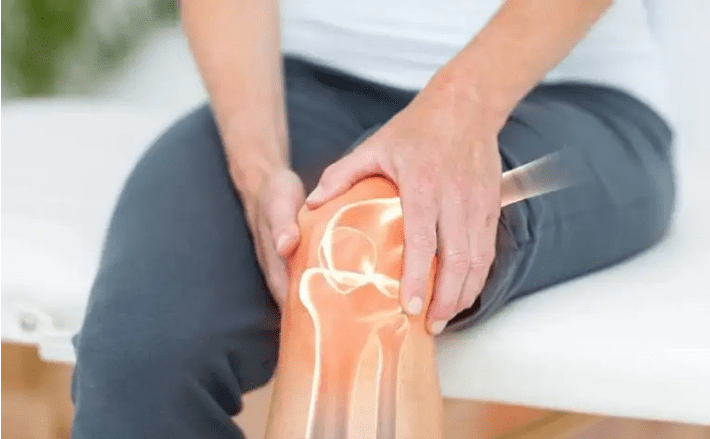Causes of Front Knee Pain and Natural Treatment Methods
Anterior knee pain, is a common problem that many people may face, and anterior knee pain can cause many problems and challenges, and it may have multiple causes, including overexertion, injuries, muscle imbalance problems, and others. It is important to understand the causes of this pain and the available treatments to deal with it effectively and reduce its impact on daily life through this article.
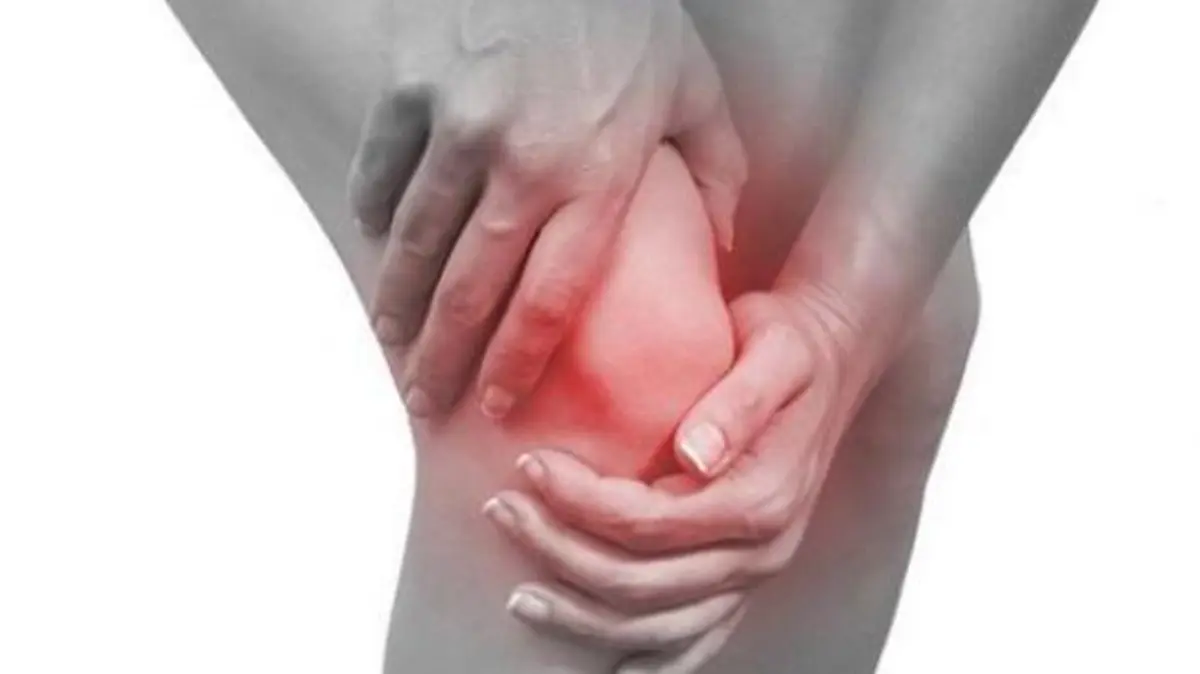
Anterior knee pain
Pain in the front part of the knee may be caused by several reasons, an increase or decrease in the position of the anterior patella of the joint may cause anterior knee pain and this may occur due to tension and contraction in the muscles and tendons of the quadriceps and their gathering away from the center. Also, sports fatigue or long-distance running can be a common cause of anterior knee pain.
In addition, there may be inflammation in the knee, such as tendinitis or knee osteoarthritis or tendinitis. Moreover, injuries such as muscle or ligament tears or cartilage tears can cause knee pain, and diseases such as osteoarthritis or rheumatoid arthritis or gout can also cause knee pain.
You should consult a doctor to get the correct diagnosis and appropriate treatment to relieve the pain and treat the condition causing the knee pain, and treatment may include medications, muscle strengthening, avoiding excessive stress and pressure on the knee joint and surrounding structures.
Get ready to move and be active again with the best treatment for knee problems in Egypt with Dr. Amr Amal.
What is knee pain?
Knee pain is one of the common problems that many people face in their daily lives and these pains are a source of inconvenience and greatly impede daily activities, and the causes of knee pain may be diverse and multiple, including previous injuries, osteoarthritis, sprains, and other causes.
Knee pain usually appears in one or more joints, and may be due to joint inflammation, injuries, overuse of the joint, or inflammation in the surrounding sac and this condition causes pain in the patellar region, which can be the result of stress, injury, deformities in the leg and foot bones, or muscle weakness.
If you are suffering from knee pain, the doctor may recommend physical therapy or different types of muscle strengthening exercises according to the specific condition that caused the pain, and if you are enthusiastic about maintaining your physical activity or practicing sports regularly, you may need to practice exercises to correct movement patterns that may affect your knees.
Always remember that consulting a specialist doctor is necessary to determine the actual cause of knee pain and provide appropriate treatment, and avoid delaying your treatment or relying on information available on the Internet only, and maintaining the health of the knee and working to strengthen the surrounding muscles will help you relieve the pain and improve your overall condition.

Causes of knee pain
Many people suffer from knee pain, and this pain may be the result of several causes, and in this paragraph, we will review some of the most important causes of knee pain and what can cause it:
- Injury: Knee pain can be the result of injury, such as ligament tears or cartilage tears, and this can occur during sports or daily activities such as running or climbing.
- Arthritis: Knee pain may be caused by arthritis, which is a condition that causes joint inflammation and irritation, and joint inflammation can occur due to aging or due to diseases such as rheumatoid arthritis.
- Gout: Gout is a condition that causes the accumulation of uric acid in the joints, and it can lead to severe pain in the knee, and gout can occur as a result of consuming large amounts of proteins or due to metabolic problems.
- Infection: Sometimes, knee pain can be the result of infection, such as bacterial joint infection, and the infection can spread to the joints and cause severe swelling and pain in the knee.
In addition, knee pain may occur as a result of other diseases such as bone diseases and cartilage tears and osteoporosis, so it is important to consult a doctor to accurately diagnose the condition and determine the appropriate treatment.
Get rid of knee pain and get ready for a life free of restrictions with advanced treatment techniques from Dr. Amr Amal.
Symptoms of knee pain
Many people may suffer from knee pain, which may be due to different causes, and in this article, we will shed light on the symptoms of knee pain and some possible treatments.
Symptoms of knee pain:
- Acute or chronic pain in the area around the knee.
- Swelling and redness in the knee.
- Difficulty in movement and walking.
- Knee pain is accompanied by a clicking sound or a feeling of locking inside the knee.
- Weakness of the thigh muscles.
- Difficulty bending or straightening the knee.
Enjoy a comprehensive and specialized treatment experience for knee problems under the supervision of Dr. Amr Amal in Egypt.

Diagnosis of knee pain
Knee pain is a common problem that many people suffer from, and the diagnosis of knee pain may be a little complicated, and in this exclusive medical guide, we will learn about some of the things that contribute to the diagnosis of knee pain
- Identifying symptoms: Knee pain may appear in different forms, such as constant pain, or pain on movement, or sudden and acute pain, and there may also be swelling and redness in the affected area, and the patient must accurately and objectively identify the symptoms as much as possible.
- Consult your doctor: As soon as knee pain appears and the symptoms are identified, it is recommended to consult the treating doctor immediately, as he is the most suitable person to evaluate your condition and diagnose the knee problem, and additional tests may be required, such as X-rays, ultrasound, or magnetic resonance imaging to obtain an accurate picture of the knee.
- Review medical history: Your medical history may be important in diagnosing the knee problem, and from previous injuries or chronic diseases such as arthritis, providing clear and comprehensive details about your health history can help better identify the cause of pain and treat it more effectively.
- Treatment: Treatment methods vary depending on the diagnosis of the knee condition, and these include:
- Physical therapy: Regular sessions with physical therapy specialists to strengthen the muscles around the knee and improve flexibility.
- Drug treatment: Includes pain-relieving medications and anti-inflammatory drugs to relieve pain and joint inflammation.
- Surgical treatment: In some severe cases, surgery may be the optimal solution to restore normal knee function.
- Pain control: In addition to ongoing treatment, some measures can be taken to control knee pain, such as wearing supportive braces, applying ice to the painful area, and avoiding activities that cause stress on the knee.
Tips for coping with knee pain
- Maintain good posture when sitting: Avoid sitting for long periods without movement or on uncomfortable chairs, and it is preferable to keep the feet on the ground and use cushions to support the back and knees if necessary.
- Practice appropriate physical activity: Physical activity can be of great benefit to knee pain, and avoid activities that put excessive stress on the knee, and choose exercises that strengthen the thigh and leg muscles in general, such as walking and stationary cycling.
- Take care of the injured knee: Give your knee rest when you feel pain, apply ice to the painful area for 15-20 minutes several times a day, and you can use cushions or strengthen the muscles around the knee to relieve the pressure on it.
- Avoid painful activities: Be sure to avoid activities that increase the severity of knee pain, such as running or high jumping, and you may need to adjust your lifestyle and avoid movements that negatively affect the knee joint.
- Choose appropriate footwear: Make sure to choose shoes that provide adequate support for the foot and knee, and avoid high-heeled shoes that do not provide good balance when walking, and choose flat and comfortable shoes.
- Consult a doctor: If the knee pain persists or worsens, it is best to consult a specialist doctor to accurately diagnose the condition and receive appropriate treatment, and the doctor may refer you to physical therapy sessions or recommend pain relievers.
Get ready quickly and effectively from knee injuries and cartilage tears with the experience of Dr. Amr Amal in treatment.

Complications of knee pain
Knee problems pose a health challenge faced by many people, and persistent knee pain can have serious long-term complications, and affect the quality of daily life for the individual, and in this list, we will review some common complications that may result from knee pain.
- Joint damage: Persistent pain may cause chronic inflammation in the joint, leading to gradual damage to the joint itself, and this damage may affect the movement of the knee and require long-term treatment.
- Muscle contraction: When a person tries to avoid using the painful knee, this may lead to contraction of the surrounding muscles, and this muscle contraction may in turn lead to spasms and additional pain.
- Changes in gait: Knee pain can lead to changes in the person’s normal walking pattern, and the person may start relying on bicycles or crutches to help relieve pressure on the painful knee, and this change in gait may affect the structure of other muscles and bones in the body.
- Lack of physical activity: Chronic knee pain can lead to avoidance of physical activity and movement, which may result in weakness of the thigh and leg muscles, an increase in body fat percentage, and an increased risk of heart disease, obesity, and other health problems.
- Psychological effects: Persistent knee pain can affect the person’s mental state, and the person may feel depressed or anxious due to the pain that affects their daily life, including the ability to move and practice favorite activities.
- Dependence on medication: In cases of chronic knee pain, reliance on medications may be required to relieve pain and improve motor function, however, some medications can cause side effects and health complications in the long term.
- Decreased quality of life: Persistent knee pain causes many complications that affect the quality of daily life, and it is difficult to perform simple vital activities such as walking or climbing stairs or standing for long periods, and the impact of this on the person’s life can be painful and exhausting.
Knee pain is not just a passing health problem, but it should be taken seriously, and appropriate care should be provided, and individuals suffering from persistent knee pain should consult a specialist doctor to evaluate the situation and guide the appropriate treatment.
When is knee pain serious?
When a person experiences knee pain, the most important question may be when this pain is serious? There are some signs that may indicate that knee pain may be serious and require immediate medical attention, and these may include:
- Acute injury: If you are suffering from an acute knee injury such as bone fractures or severe sprain, the pain may be serious and you may need to undergo medical tests and x-rays to ensure there are no serious injuries.
- Severe swelling and redness: If you feel severe swelling in the knee and noticeable redness, it may be a sign of a serious inflammation that requires immediate medical consultation.
- Inability to walk: If you cannot walk or the pain increases when trying to bear weight on the injured knee, it may indicate a serious problem that requires rapid medical evaluation.
- Severe pain from arthritis: In the case of severe and persistent pain in the knee associated with arthritis, it may be necessary to visit the doctor to evaluate the condition and prescribe appropriate treatments.
It should be remembered that this information is based only on data available on the Internet and cannot be replaced by direct medical diagnosis, and in the presence of any of these signs, it is recommended to go to the doctor to accurately evaluate the condition and provide appropriate treatment.
Enjoy an active life again and get ready to practice your favorite hobbies thanks to effective knee treatment from Dr. Amr Amal.
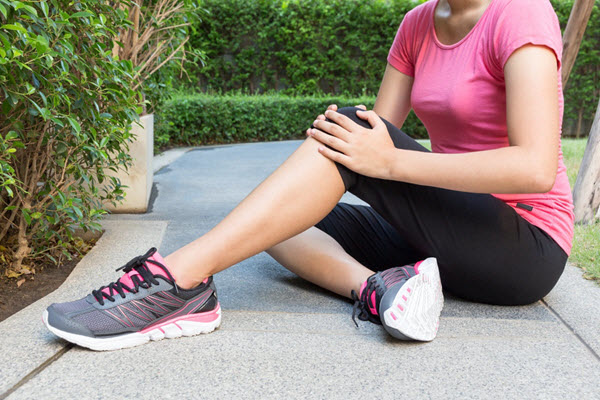
How do you get rid of knee pain?
Knee pain is a common problem that people of all age groups suffer from, as it is caused by multiple factors and can be painful and annoying. We will provide you with some strategies and tips that may help you get rid of knee pain, including the following:
- Use cold and warm compresses: Warm compresses are useful for relieving knee pain, while cold compresses help reduce inflammation, and keep in mind that it is preferable to alternate the use of warm and cold compresses to get the best results.
- Do muscle strengthening exercises: Strengthening the thigh and leg muscles can have a positive effect on supporting and stabilizing the knee, and you can practice exercises that focus on the muscles around the knee, such as wall slides and leg raises, and it is preferable to consult a physical therapy specialist to determine the appropriate exercises for you.
- Maintain a healthy weight: Excess weight can increase the pressure on the knee and increase the risk of knee pain, so try to maintain a healthy weight through a balanced diet and regular physical activity.
- Avoid shocks and sports injuries: Try to avoid strong shocks that the knee may be exposed to during sports activities, and use appropriate protective means such as sports braces and supports to reduce the risk of injuries.
- Consult a Doctor: If knee pain persists or worsens, it is essential to consult a specialist doctor. The doctor can diagnose your condition and provide appropriate treatment to relieve pain and improve the overall condition of the knee.
- Additional Precautionary Steps: Avoid standing for long periods, use suitable and comfortable footwear, and avoid walking on hard surfaces barefoot. These simple measures can help prevent knee pain.
What Is the Natural Treatment for Knee Pain?
Knee pain is a common problem that can affect people’s quality of life. In addition to available medical treatments, there are several natural ways to alleviate knee pain. In this paragraph, we will explore some natural treatments that can help reduce knee pain:
1. Rest and Protect the Affected Area
- Rest and reducing physical activity are recommended to minimize pressure on the affected knee.
- Using a small cushion under the knee can provide comfort and protect the affected area.
2. Ice Packs
- Using ice packs can help reduce knee pain and swelling. Apply cold packs for 10 to 20 minutes, 3 times a day for two days or more.
- Icing helps reduce inflammation and alleviate pain.
3. Physical Therapy
- Your doctor may recommend physical therapy for treating knee pain, focusing on strengthening and flexibility exercises targeting the muscles around the knee.
- Physical therapy can enhance knee strength and stability, reducing knee pain and aiding in recovery.
4. Use of High-Quality Extra Virgin Olive Oil
- Extra virgin olive oil contains compounds and properties that can reduce inflammation and help in treating knee pain.
- Olive oil contains oleocanthal, which has anti-inflammatory effects and can help alleviate pain.
5. Pain Relieving Medications
- Your doctor may suggest taking some over-the-counter pain relievers, such as non-steroidal anti-inflammatory drugs (NSAIDs), to temporarily alleviate pain.
- Consult your doctor before taking any medication.
6. Heat and Cold Therapy
- One of the most important natural treatment methods for the knee is heat and cold therapy.
- A healthcare professional can apply hot or cold water compresses to the knee based on the pain condition, to alleviate pain and swelling.
If knee pain persists or worsens, consult a healthcare specialist or a physical therapist to determine the appropriate treatment and suitable exercises. Continue to follow the rest and treatment advice provided and take care of your knee to improve its health and reduce pain.
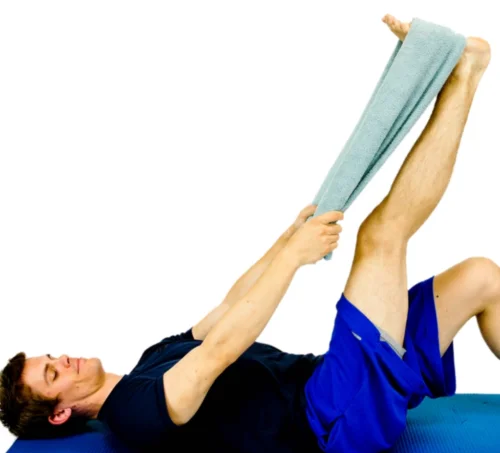
Best Doctor for Knee Pain Treatment in Egypt
In light of the extensive research conducted by patients suffering from knee pain in Egypt, studies have identified Dr. Amr Amal as the best doctor for knee pain treatment in the country. Dr. Amr Amal specializes in treating knee injuries and is known for his extensive experience in this field.
Dr. Amr Amal’s recommendations include rehabilitation and physical therapy programs, where he emphasizes following his instructions accurately and paying attention to treatment and self-care. He also advises patients not to ignore pain and seek appropriate treatment. For knee osteoarthritis treatment, Dr. Amr Amal suggests using medications that help alleviate pain and reduce swelling, in addition to using anti-inflammatory drugs for treatment.





